
Good morning. It’s Friday, Sept. 26.
- President Trump plans to give tariff revenues to farmers.
- California City is in turmoil over immigrant detention center.
- And Paul Thomas Anderson film boosts the North Coast.
Statewide
1.
During President Trump’s first term, his Agriculture Department paid $23 billion to farmers hurt by his trade war with China. As farmers are walloped again by his latest trade war, Trump said on Thursday that he wants to take money raised by his tariffs and “give it to our farmers,” a cohort that has overwhelmingly supported him at the ballot box. Farmers will hurt for a while, Trump acknowledged. But eventually, he said, they will “be making a fortune” from his plan. N.Y. Times | Reuters
Northern California
2.
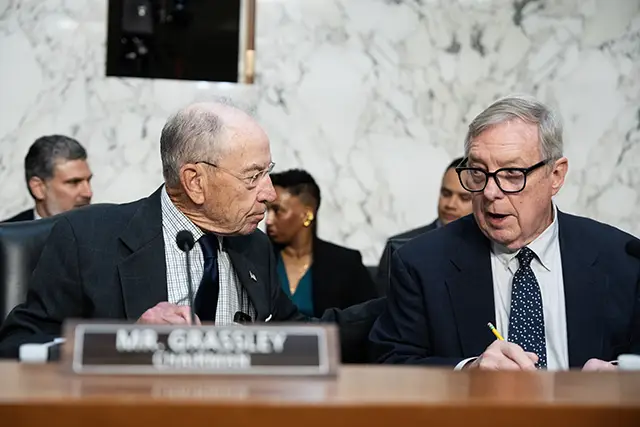
Two top senators, one a Republican and the other a Democrat, sent letters to Apple, Alphabet, Meta and other heavy users of H-1B visas demanding information on the wages foreign workers are paid, and whether American employees were displaced in the process. “We find it hard to believe that Amazon cannot find qualified American tech workers to fill these positions,” they wrote to Amazon’s CEO. The scrutiny comes as President Trump has imposed a new $100,000 fee for H-1B visas, drastically changing the math for many Silicon Valley businesses. Wall Street Journal
3.
The Wall Street Journal wrote about growing fears that enthusiasm for artificial intelligence has turned into a bubble that is doomed to pop:
“The artificial-intelligence boom has ushered in one of the costliest building sprees in world history. … AI proponents liken the effort to the Industrial Revolution. A big problem: No one is sure how they will get their investment back — or when.”
4.
On this week’s California Sun Podcast, host Jeff Schechtman talked with Tim Higgins, a business columnist for the Wall Street Journal and author of the new book, “iWar,” on the courtroom wars over Apple’s App Store rules. Apple’s grip on the app economy has been hugely lucrative for the company as it forces developers to hand over 30% of their sales through its iPhone marketplace. But a rebellion led by Epic Games and Spotify now threatens to wipe out billions of dollars of profit at Apple.
5.
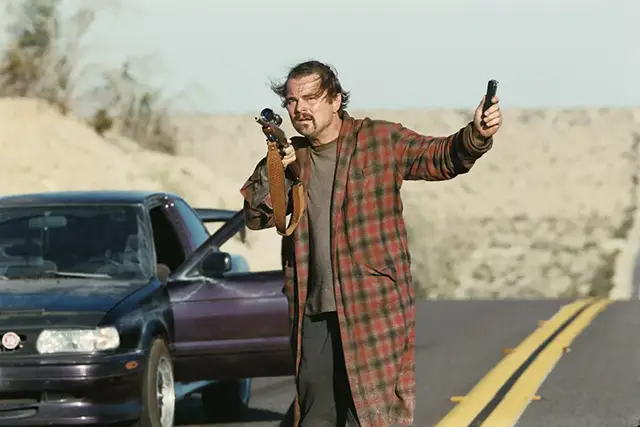
“Shockingly urgent.”
A “timely masterpiece.”
“A startling, present-day American epic.”
In 2024, local news publications in Humboldt County reported giddily on the presence of a star-studded Hollywood production traipsing through the region’s charming towns and redwood forests. Now the movie — “One Battle After Another,” directed by Paul Thomas Anderson and starring Leonardo DiCaprio — is out. And the critics appear to love it. Washington Post | N.Y. Times
6.
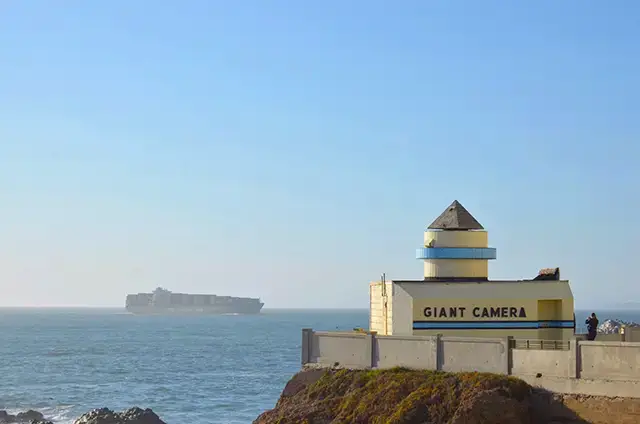
A giant pastel-colored camera sits on a cliff edge in San Francisco in an appeal to whimsy that would warm the heart of Wes Anderson. Built as part of a nearby amusement park in 1946, the walk-in Camera Obscura uses a rooftop lens and mirror to project a 360-degree view of the surrounding shoreline onto a 6-foot table. Historians say it is the oldest camera obscura in America to remain in its original location. But it was almost lost. In the late 1990s, managers of the federal recreation area deemed the little building ugly and proposed tearing it down. A local backlash set them straight. Atlas Obscura | Noehill.com
Southern California
7.
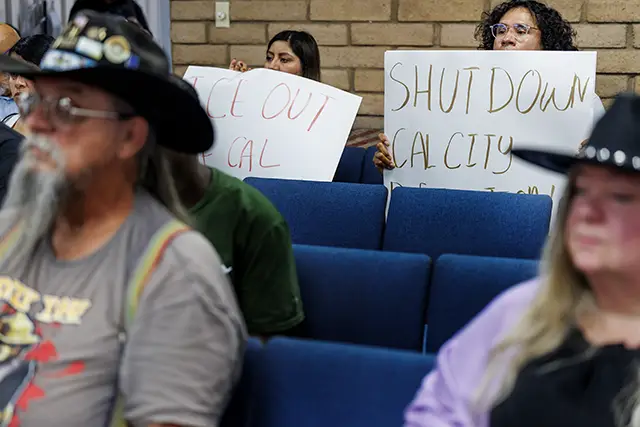
When rumblings of an ICE detention center opening in California City began this summer, leaders of the tiny Mojave Desert town were just as surprised as everyone else. The city got no notice that it would be hosting the state’s largest such facility, and it has no jurisdiction over what happens inside. That hasn’t stopped activists and family members of detainees from lashing out. Once-quiet City Council meetings have become packed five-hour marathons as speakers protest the center and plead with councilmembers to do something. S.F. Chronicle
8.
A nearly four-decade-old dispatch system hampered communications.
Emergency workers were spread thin, including just 37 staffers in the county’s emergency management office. (New York’s office has more than 200).
Outdated policies obscured who had the authority to issue evacuation orders.
Those are a few of the findings of a long-awaited independent review of Los Angeles’s January wildfires, released on Thursday, detailing what went wrong and how to make sure it doesn’t happen again. County leaders said they were committed to adopting the report’s recommendations. N.Y. Times | L.A. Times
- Roughly 3,500 construction permit applications have been submitted in Los Angeles’ burned areas, an analysis found. Less than 29% have been approved. Bloomberg
9.
For years, a Santa Monica property manager named John Alle complained about Los Angeles County’s failure to stem homelessness. Then he took it upon himself to set up a hotline offering people free tickets to leave town. It’s a strategy that has become increasingly common in California, where empathy has given way to pragmatism. The programs, wrote the New York Times, “promise something cheaper and faster than rehab centers or housing wait-lists: a one-way ticket home, arranged for a few hundred dollars.”
10.

Jillian Lauren, the wife of Weezer bassist Scott Shriner, will avoid jail time for shooting at Los Angeles police officers in April. On Thursday, a judge granted Lauren, 52, mental health diversion, meaning she’ll have to attend therapy and avoid drugs and alcohol for two years. Lauren brandished a firearm when officers surrounded her backyard while in pursuit of a hit-and-run suspect. She ignored orders to drop the weapon, and shot in the officers’ direction. They returned fire, striking Lauren in the shoulder. L.A. Times | KTLA
11.
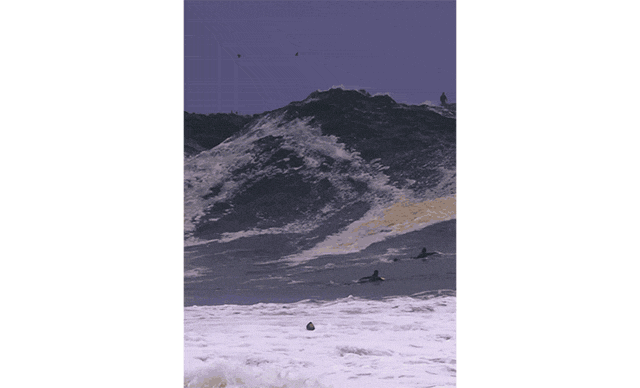
A clip of a terrifyingly tall wave cresting over surfers in Newport Beach made the rounds on social media this week, leading some commenters to conclude that it must involve artificial-intelligence manipulation. But it’s just the Wedge. The renowned surf break behaves strangely thanks to the wave-doubling effect of a jetty. As waves bounce off the rock wall, they collide with the next incoming waves. See the full video that the clip was taken from, captured by surf videographer Brent Weldon back in April. (The freakishly tall peak comes around the 22-minute mark). 👉 YouTube
- And read more about the science behind “California’s most dangerous wave.” 👉 Curated California
In case you missed it
12.
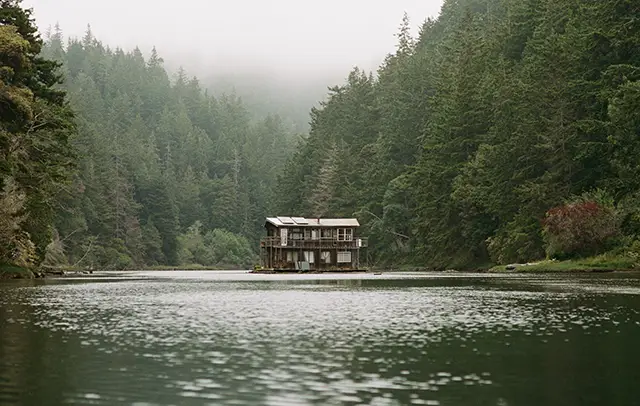
Five items that got big views over the past week:
- Kayakers rave about the beauty of coastal Mendocino’s Albion River, an emerald waterway with ospreys, otters, and soaring trees. Then there are the floating homes. Just up from the river’s mouth is the first of three ramshackle cabins anchored on platforms in the water. A kayaker got a close look at them. 👉 YouTube
- One day in December 2023, Chance Comanche, a promising basketball player for the Stockton Kings, was pulled out of practice by police investigating a grisly murder in the Nevada desert. He quickly confessed. His teammates had thought Comanche was destined to play in the NBA. Two years later, their shock has barely subsided. N.Y. Times
- Solar-powered cars are almost here. Aptera Motors, based in Carlsbad, created sinuous solar panels that conform to the shape of its new electric car, while a tough glass skin protects it from a hailstorm or stray freeway pebble. Aptera plans to ship a $40,000 car as soon as next year. Wall Street Journal
- See Aptera’s car in action. 👉 YouTube
- Company executives have attributed the success of sunglasses maker Oakley to its “renegade” ethos. In 1998, that spirit took shape in the design of the company’s Orange County headquarters. Pulling into the Oakley parking lot in Foothill Ranch, one could imagine having taken a wrong turn toward an interplanetary docking station. See a photo gallery.
- Between 1971 and 1973, the student photographer John Divola turned his camera on his own neighborhood in the San Fernando Valley. Many years later, he would look back at the work as an unintentionally sociological project, capturing the quintessential look of a time and place. Divola published a collection of the photos in 2014, many of which are shared on his Instagram feed.
The California Sun surveys more than 100 news sites daily, then sends you a tightly crafted email with only the most informative and delightful bits.
Sign up here to get four weeks free — no credit card needed.

The California Sun, PO Box 6868, Los Osos, CA 93412

Wake up to must-read news from around the Golden State delivered to your inbox each morning.